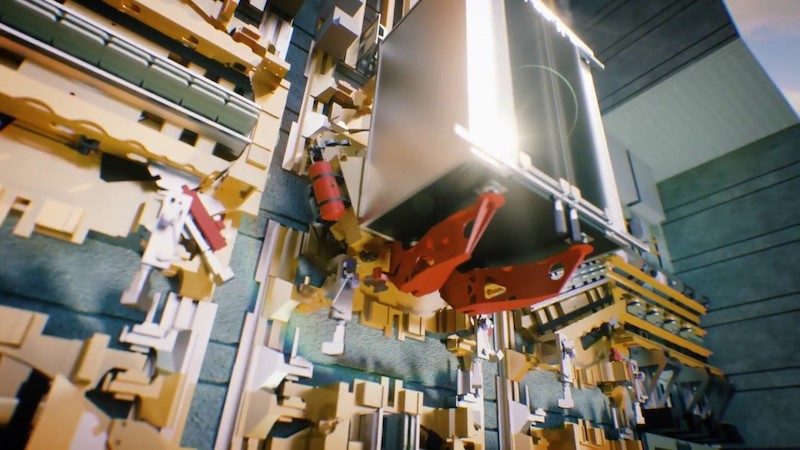Last May, Germany based Thyssenkrupp decided to divide itself into two separate companies as part of a major restructuring effort. That strategy called for spinning off its profitable Elevator Technology business unit via an Initial Public Offering or by putting that unit up for sale.
Elevator Technology, in the fiscal year ended Sept. 30, 2019, generated 907 million Euro (US$1 billion) in cash flow from 7.96 billion Euro in net sales, both up around 5% from the previous year. Thyssenkrupp’s total revenue, just under 42 billion Euro, was up only 1%, and the company reported a 260 million Euro net loss on top of a 12 million Euro loss the previous fiscal year.
Thyssenkrupp, as a corporation, is also groaning under 8.5 billion Euro in pension obligations and 5.1 billion Euro in net debt.
The Elevator Technology unit—which made waves a few years ago with MULTI, the industry’s first sideways-moving elevator transport system—has since drawn interest from at least four investor groups, including one that includes Finnish engineering firm Kone Oyj and CVC Capital Partners, which last week reportedly made a non-binding offer of 17 billion Euro. Bloomberg reports that Kone gave Thyssenkrupp the option of receiving all cash or a combination of cash and stock for the elevator business. And to mollify regulators over any antitrust issues, Kone said it would hand the Elevator Technology operations in Europe to CVC.
Last year, regulators scotched Thyssenkrupp’s attempt to forge a joint venture between its Steel Europe business unit and Tata Steel Ltd.
Last November, Reuters reported that Kone proposed paying Thyssenkrupp a multibillion-euro breakup fee (reportedly the equivalent of US$3.3 billion) to improve its position in the company’s auction of its elevator unit.
The other investor groups vying to acquire Thyssenkrupp’s Elevator Technology unit reportedly include a consortium of Blackstone Group, Carlyle Group, and Canada Pension Plan Investment Board. Advent International, Cinven and the Abu Dhabi Investment Authority form another investor group. And Brookfield Asset Management partnered with Temasek Holdings Pte to bid. These offers reportedly were all under 16 billion Euro, but suitors will have the opportunity to adjust their bids next month.
Thyssenkrupp has also disclosed that it plans to put its plant-building unit—which makes chemicals, cement, and fertilizer plants—on the auction block, possibly selling the division in parts.
Related Stories
| Aug 11, 2010
New air-conditioning design standard allows for increased air speed to cool building interiors
Building occupants, who may soon feel cooler from increased air movement, can thank a committee of building science specialists. The committee in charge of ANSI/ASHRAE Standard 55 - Thermal Environmental Conditions for Human Occupancy—after months of study and discussion--has voted recently to allow increased air speed as an option for cooling building interiors. In lay terms, increased air speed is the equivalent of turning up the fan.
| Aug 11, 2010
PCA partners with MIT on concrete research center
MIT today announced the creation of the Concrete Sustainability Hub, a research center established at MIT in collaboration with the Portland Cement Association (PCA) and Ready Mixed Concrete (RMC) Research & Education Foundation.
| Aug 11, 2010
Study explains the financial value of green commercial buildings
Green building may be booming, especially in the Northwest, but the claims made for high-performance buildings have been slow to gain traction in the financial community. Appraisers, lenders, investors and brokers have found it difficult to confirm the value of high-performance green features and related savings. A new study of office buildings identifies how high-performance green features and systems can increase the value of commercial buildings.
| Aug 11, 2010
VA San Diego Healthcare System Building 1 Seismic Correction
San Diego, Calif.
Three decades after its original construction in the early 1970s, the Veterans Affairs San Diego Healthcare System Building 1 fell far short of current seismic codes. This not only put the building and its occupants—patients, doctors, nurses, visitors, and administrative staff—at risk in the event of a major earthquake, it violated a California state mandate requiring all hospitals to either retrofit or rebuild.
| Aug 11, 2010
Green Building Initiative launches two certification programs for green building professionals
The Green Building Initiative® (GBI), one of the nation’s leading green building organizations and exclusive provider of the Green Globes green building certification in the United States, today announced the availability of two new personnel certification programs for green building practitioners: Green Globes Professional (GGP) and Green Globes Assessor (GGA).
| Aug 11, 2010
29 Great Solutions for the AEC Industry
AEC firms are hotbeds of invention and innovation to meet client needs in today's highly competitive environment. The editors of Building Design+Construction are pleased to present 29 "Great Solutions" to some of the most complex problems and issues facing Building Teams today. Our solutions cover eight key areas: Design, BIM + IT, Collaboration, Healthcare, Products, Technology, Business Management, and Green Building.
| Aug 11, 2010
International Living Building Institute established to advance 'living buildings'
The idea of a Living Building, a high-performance building that produces its own power and cleans and reuses all of its water, is gaining momentum around the world. In an effort to oversee the global development of Living Buildings, the International Living Building Institute (ILBI) has been established.







